| THE DARTMOOR PONY
DARTMOOR NATIONAL PARK, DEVON, UNITED KINGDOM
'Dartmoor Ponies - Our Moorland Heritage'
HISTORY OF THE DARTMOOR PONY
The first documentation relating to the Dartmoor pony appears in 1012, in the will of Bishop Aelfwold of Crediton. Between the 12th and 15th century the ponies were used extensively to carry tin off the moor to the stannary towns, but when the tin mining boom came to an end the ponies were left to roam the moor, although some continued to be used on the farms. Whilst they were small, fast and agile, they were not large enough to be considered for military use.
In 1535 Henry VIII directed that any person who kept their mares with 'any stoned horse under the stature of 14 handfuls' were to be liable to a fine of 40 shillings and furthermore, all occupiers of land, 'to the extent of one mile in compass' were to keep 'two mares apt and able to bear foals of the altitude and height of 13 handfuls at least upon pain of 40s. So the quest for the larger weight bearing horse began, although, in certain remote and wild areas such as Dartmoor, little attention was paid to this legislation, and the little hardy Dartmoor ponies continued in general use on the land.
In the last half of the 18th Century, the Industrial Revolution afforded new employment for the ponies - mainly in the coal mines closely followed , especially in the later 19th century, by demands on the sporting front for Polo, a game imported by British cavalry soldiers returning home from India.
In 1893 The National Pony Society was formed, (the first of its kind), and for some years this was known as 'The Polo Pony Society'. This was closely followed in 1899 by The Mountain And Moorland sections opened in The Polo Pony Stud Book, and it was agreed to accept the Dartmoor registrations with a local committee appointed to select suitable ponies.
In 1925 The Dartmoor Pony Society was formed and from here the Dartmoor pony breed has grown to its present day standard. For those interested in more detail, there are a number of excellent books, including 'The History of The Dartmoor Pony' by Joseph Palmer.
DARTMOOR PONIES - NOW IN DANGER OF EXTINCTION
Dartmoor ponies are as much a part of Dartmoor as the tors, the streams, the heather and the unpredictable weather. So much so, that we take them for granted. But Dartmoor pony populations are now at a critically low level. In 1950 there were estimated to be 30,000 ponies on the moor - now there is a fraction of this number.
These unregistered Dartmoor ponies, running feral on the Commons of Dartmoor, have dramatically declined due to market forces and legislation. There are now just 400 breeding mares remaining on the Commons of Dartmoor. These ponies are now in danger of extinction. THE DARTMOOR PONY HERITAGE TRUST www.dpht.co.uk
The Dartmoor Pony Heritage Trust (registered charity no. 1109196) was created in 2005 to protect the remaining gene pool of Heritage ponies only found on Dartmoor. Its mission is to save these ponies from extinction and to maintain their presence on Dartmoor for future generations.
Why is the work of the Trust so important?
The Dartmoor Pony Society, whose primary interest is in the improvement of the pedigree Dartmoor Pony, was concerned that the native Dartmoor (unregistered Dartmoor pony) might disappear due to market forces, and alarmed that the number of native ponies had dropped to a critical level. The pedigree pony relies on new blood coming in from the native pony to ensure that the pedigree does not become inbred.
The native Dartmoor pony is, in effect, 'the gene pool' for the breed. Once the native pony is lost from Dartmoor – its original habitat – it must then be considered extinct.
The Dartmoor Pony Preservation Scheme is run by the Dartmoor Pony Heritage Trust. The aim of the scheme is to support as many of the existing native Dartmoor pony herds on the Commons and to ensure that the number of native Dartmoor ponies does not fall any further.
The Trust runs a number of initiatives to assist pony keepers and to raise the value of the Dartmoor Pony.
• Handling young stock, producing quiet ponies suitable for family homes.
• Castrating colt foals not suitable for breeding.
• Running continually updated Sales List and holding private pony sales.
• Promoting the Dartmoor Pony for Conservation Grazing and administering the Heritage Trust List. (For example, a herd of Dartmoor Heritage ponies were sold to the Norfolk Wildlife Trust for conservation grazing).
A Valuable Educational Resource
The Dartmoor Pony Heritage Trust has created an innovative educational facility, which provides access the heritage of Dartmoor. The Trust's aim is to provide the opportunity for a wide range of children and students, of various ages, to build self confidence, individual skills and to work as a team. Every student will have the chance to work with and lead a Dartmoor Pack Pony along the a moorland or forest trail. The sessions help students to understand the importance of the Dartmoor heritage and environment, with an emphasis on the Dartmoor National Park.
Taking Part in Ten Tors
Every year the Trust enters a team of Dartmoor Pack Ponies for the annual Jubilee Challenge, an eight mile walk for young people with disabilities, which runs during the Ten Tors weekend.
Bellever
The Dartmoor Pony Heritage Trust has taken over the grazing rights to a 1,000 acre site at Bellever on Dartmoor. This has provided the Trust with many opportunities to expand its Education Programme and Preservation Scheme.
The Trust now has a secure site next to the existing Centre, where it can mature ponies up to an age where they can be sold for riding , conservation grazing or as a safety net for vulnerable herds which might, otherwise, be lost. The site has full public access. Visitors are encouraged to take a walk around this ‘Jewel in Dartmoor’s Crown’ and see a real Dartmoor Pony!
|
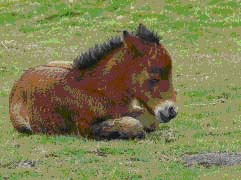 |
� |
|
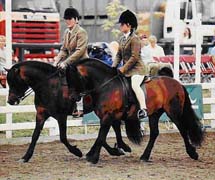
Jo Penfold with Shilstone Rocks Warlord & Heather Harrison with Shilstone Rocks Snowfox
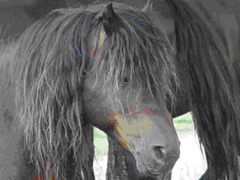
A good, strong, Dartmoor Heritage stallion
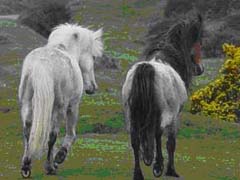
A pair of Dartmoor Heritage Stallions sorting out boundaries
The ponies are as much a part of Dartmoor as the Tors...
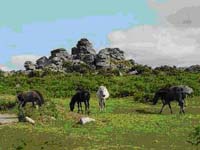
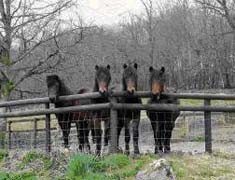
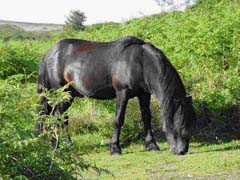
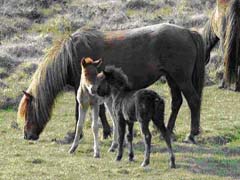
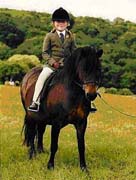
Freya Thompson riding Shilstone Rocks Masada
|
THE DARTMOOR PONY 'TYPE'
The indigenous Dartmoor pony, now known as Dartmoor Heritage ponies have plain coats, usually bay, with long flowing manes and little or no white parts - though they can be black, brown, chestnut or grey.
The Dartmoor pony has many uses. With their kind and gentle nature, they make excellent children’s ponies. They are also very efficient grazing animals and help keep vegetation under control, preventing coarse growth from taking over and blocking access on the moor.
|
